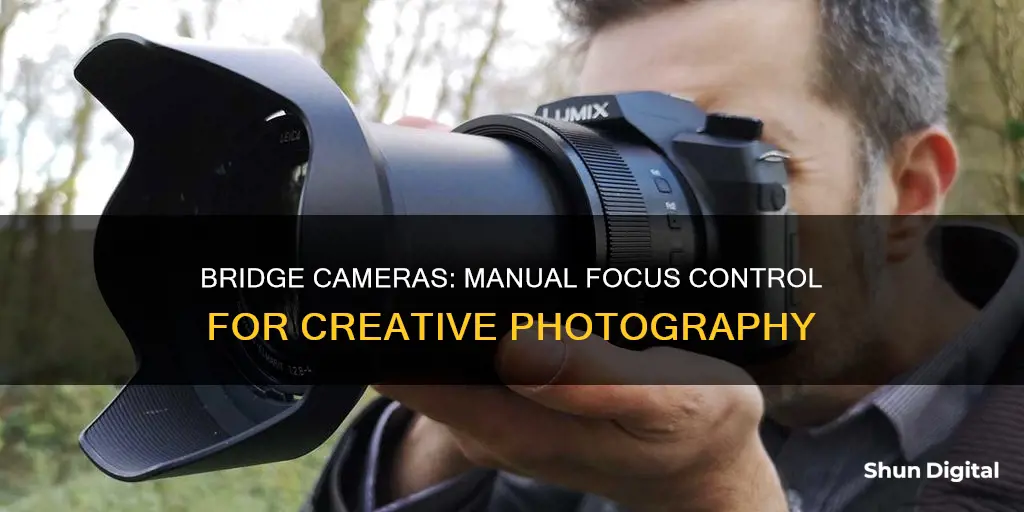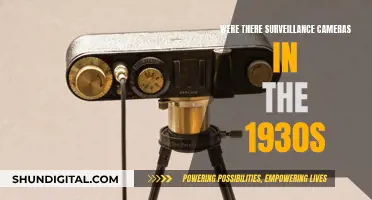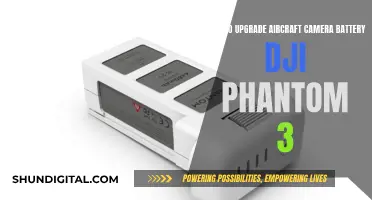
Bridge cameras are a versatile option for photographers, offering a range of features that make them suitable for various scenarios, from wildlife to travel photography. They bridge the gap between point-and-shoot and more complex interchangeable lens cameras like DSLRs and mirrorless cameras.
One of their key selling points is their built-in superzoom lens, which provides a wide range of zoom capabilities, from wide-angle to telephoto shots. This makes them ideal for capturing both near and far subjects, landscapes, travel, wildlife, and sports.
While bridge cameras offer excellent versatility, they may not be for everyone. The image quality may not match that of prime lenses, and the typically small sensors can impact image quality, especially in low-light conditions. However, some bridge cameras, like the Sony RX10 IV and Panasonic Lumix FZ2000/FZ2500, feature larger 1-inch sensors that deliver better image quality.
When choosing a bridge camera, consider the zoom range, sensor size, monitor type, and your budget. If you require a large zoom range, keep in mind that the quality may be lower at the extreme ends. For better image quality, opt for a larger sensor, ideally a 1-inch sensor. An articulating or tilting monitor will also provide more flexibility in your shooting scenarios.
Some popular bridge camera options include the Canon PowerShot SX70 HS, which offers good value for money, and the Nikon Coolpix P1000, which boasts an impressive 125x optical zoom range. For those seeking a premium option, the Sony Cyber-shot RX10 IV delivers exceptional detail with its 1-inch, 20.1MP sensor and 24-600mm f/2.4-4 zoom lens.
| Characteristics | Values |
|---|---|
| Image Quality | Varies, but generally lower than DSLRs and mirrorless cameras |
| Zoom | Usually very high, often 20x or more |
| Size | Larger than compact cameras, but smaller than DSLRs |
| Weight | 600g-1.4kg |
| Sensor Size | 1/2.3" or 1" |
| Manual Controls | Usually included |
| RAW Support | Usually included |
| Video | Usually 4K |
| Price | $250-$1,700 |
What You'll Learn

Bridge cameras are a good choice for wildlife photography
Firstly, bridge cameras combine the convenience of a compact camera with the zoom of a telephoto lens and the handling of a DSLR. This hybrid performance makes them versatile and powerful, allowing photographers to capture everything from wide-angle landscape shots to detailed images of distant subjects. The zoom capabilities of bridge cameras are especially noteworthy, with some models offering up to 3000mm of zoom, which is even used by security services for surveillance. This makes bridge cameras ideal for capturing wildlife, as photographers can get incredibly close to their subjects without having to change lenses.
Secondly, bridge cameras are relatively affordable compared to DSLRs or mirrorless cameras. They offer a lot of features and performance for the price, making them a good option for those who want a powerful camera without breaking the bank.
Thirdly, bridge cameras are easy to use, even for inexperienced photographers. They have simple controls and intuitive user interfaces, making them accessible to casual photographers or those who want an all-in-one model without the complexity of a DSLR.
However, it's important to note that bridge cameras do have some limitations. The image sensors in bridge cameras are generally smaller than those in DSLRs or mirrorless cameras, resulting in lower resolution, reduced dynamic range, and poorer low-light performance. Additionally, the fixed lens of a bridge camera may not be suitable for certain types of photography, such as macro or portrait photography.
In conclusion, bridge cameras are a good choice for wildlife photography due to their versatility, zoom capabilities, affordability, and ease of use. While they may not offer the same image quality as more expensive cameras, they provide a convenient and powerful option for capturing distant subjects, making them a popular choice for photographers interested in wildlife, sports, or travel photography.
Understanding Camera Modes: What Does S Mode Do?
You may want to see also

Bridge cameras are versatile and easy to use
Bridge cameras are an excellent option for photographers who want a camera that is easy to use and versatile. They are called bridge cameras because they bridge the gap between point-and-shoot cameras and DSLRs (digital single-lens reflex cameras). They offer a convenient combination of a compact camera's convenience, a telephoto lens's zoom, and the handling of a DSLR.
Bridge cameras are similar in size and weight to the smallest DSLRs, but they lack interchangeable lenses. They have fixed lenses with a massive zoom range, sometimes up to 3000mm, which is not available in a traditional camera system. This makes them ideal for capturing wildlife, sports, and even astrophotography. The large zoom range covers everything from wide-angle landscape shots to detailed images of distant objects, making them perfect for family, travel, and animal photography.
In addition to their impressive zoom capabilities, bridge cameras also offer fast burst speeds and 4K video. They typically have smaller image sensors than DSLRs or mirrorless cameras, resulting in lower resolution, reduced dynamic range, and poorer low-light performance. The fixed lens also limits the types of shots that can be taken, such as macro photography, and makes it more challenging to blur backgrounds for portraits.
Despite these limitations, bridge cameras are incredibly useful and provide a lot of value for the price. They are a great choice for inexperienced photographers as they offer a balance between image quality and zoom capability. Some of the best bridge cameras in the market include the Sony RX10 IV, Nikon P1000, and Canon PowerShot SX70 HS. These cameras offer a range of features, including large zoom ranges, good image quality, and compact designs, making them versatile and easy-to-use options for photographers.
Uncover Camera Port's Stealth Mode: Here's Why
You may want to see also

Bridge cameras have a fixed lens
Bridge cameras are fixed-lens cameras that bridge the gap between point-and-shoot cameras and interchangeable-lens cameras like DSLRs and mirrorless cameras. They are similar in size and weight to DSLRs but lack interchangeable lenses and optical viewfinders.
Bridge cameras typically have small image sensors, allowing their lenses to be smaller than those of a 35mm or APS-C SLR lens covering the same zoom range. This makes it possible to have very large zoom ranges (from wide-angle to telephoto, including macro) with just one lens. The typical bridge camera has a telephoto zoom limit of over 400mm (35mm equivalent), with some 21st-century cameras reaching up to 2000mm or even 3000mm.
While bridge cameras offer the convenience of a point-and-shoot camera in the form factor of a DSLR, they have some limitations. The image sensors in bridge cameras are smaller than those in DSLRs and mirrorless cameras, resulting in lower resolution, reduced dynamic range, and poorer low-light performance. The fixed lens offers huge zoom capabilities but doesn't support certain types of photography, such as macro photography. Additionally, the smaller sensor and fixed lens make it more challenging to achieve shallow depth of field effects like blurred backgrounds in portraits.
Despite these limitations, bridge cameras remain popular due to their affordability, ease of use, and versatility. They are particularly well-suited for capturing wildlife, sports, and astrophotography, as well as family, travel, and animal photography.
Charging Your Fujifilm Camera Battery: Alternative Methods
You may want to see also

Bridge cameras are bulkier than compact cameras
Bridge cameras are a good choice for photographers who want the simplicity of a compact camera but want more scope with their lens focal range and creative manual features without having to make the leap to a costly DSLR or mirrorless model. They are also a good option for those who want an all-in-one camera with a long zoom that will take good photos.
The main disadvantage of a bridge camera is the size of the sensor. The sensor is the part of the camera that records the image as a digital file, and larger sensors can capture more light, producing better images when there is less light available. Bridge cameras have smaller sensors, which means they don't perform as well in low-light conditions.
Choosing the Right Charger for Your Camera: A Guide
You may want to see also

Bridge cameras are more affordable than DSLRs
DSLRs, on the other hand, are more expensive and require you to change lenses. The lens that is built into a bridge camera is meant to be versatile and ideal for all kinds of situations. This means you can get wide-angle shots of a landscape or building, or zoom in to a far-away detail or animal, without having to carry around a bag of lenses.
Bridge cameras are also smaller than DSLRs with a lens attached, although they look quite similar. They are larger than point-and-shoot cameras.
The Evolution of the 75' Camaro: A Rare Breed
You may want to see also
Frequently asked questions
Yes, bridge cameras have manual focus. They also have manual aperture and shutter speed settings.
A bridge camera is a type of camera that has more features than a compact camera but isn't as complex as an interchangeable lens camera like a DSLR or mirrorless camera. It's called a bridge camera because it acts as a bridge between a point-and-shoot camera and a more feature-rich camera.
Bridge cameras offer impressive zoom capabilities, usually at least a 40x optical zoom. They are also lighter and more compact than a DSLR or mirrorless camera with a similar zoom lens. Most bridge cameras also feature image stabilization and manual controls.







